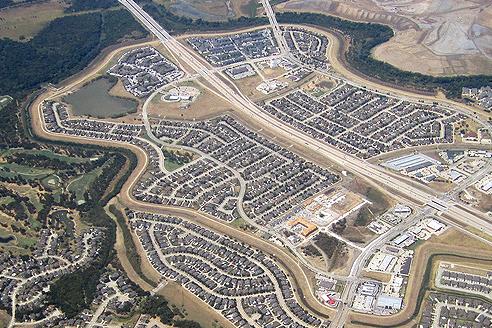
Mainstream economics has yet to embrace the potential of agent-based modeling to accelerate our understanding of how humans impact systems. But evidence that this tool is useful for exploring environmental-economic problems is easy to find.
Nicholas Magliocca, a computational research fellow at the National Socio-Environmental Synthesis Center (SESYNC), uses agent-based models (ABMs) to investigate the dynamics of human–environment interactions and their consequences for environmental and economic sustainability. In a nutshell, that means he uses computers to simulate how individuals behave, and how the interactions of their behaviors lead to large-scale outcomes.
ABMs are critical tools, Dr. Magliocca explains, for researching questions that might be otherwise unethical or impossible to explore. He points to his recent research on how urban development patterns are influenced by economic variables—for example, a home buyer’s income (unethical to manipulate in the real world) and/or preference for lot size (difficult, if not impossible, to manipulate in the real world).
In a paper recently published on the research, Magliocca and his co-authors—Virginia McConnell and Margaret Walls of Resources for the Future—explain that communities across the United States have invested in a variety of programs and policies to combat urban sprawl, which is associated with consequences such as increased air pollution, reduced access to natural areas, and loss of local farmland. But how do communities determine which of these investments are effective? It’s complicated, because the urban development process itself is so complex. Hailing a single policy as a key solution seems inconceivable: there are endless arrays of physical landscapes, consumer preferences, and market fluctuations to consider, after all.
While it may be human impulse to reduce complexity, ABMs embrace it. Magliocca and his colleagues’ model incorporates three types of agents (consumers who purchase houses of various types, a developer, and farmer/landowners who choose between farming and selling their land) and simulates a series of market events (buying land, building houses, setting asking prices). The agents’ decisions are governed by a set of mathematical algorithms—learning rules based on cognitive models so consumers, developers, and landowners can adapt over time, as they would in the real world.
The ability to manipulate the otherwise unethical or impossible reveals why ABMs are so useful. Tweaking the agricultural productivity of a farmer’s land here, or a consumer’s preference for travel/commute time there, results in an entirely different model scenario with entirely different outcomes. The researchers ran the model 150 times in all, with each small change unleashing a slew of varying feedbacks between agents and markets.
The most surprising result? Early development patterns are dictated by agricultural land value—but eventually become dominated by farmers’ land price expectations.
“In a very rural area, the value of land is tied pretty tightly to its agriculture productivity,” Magliocca explained. “All a developer needs to do to buy is determine that value threshold and make a slightly higher offer. But at some point, when and where land is developed is more about farmer’s reactions to changing prices and development patterns rather than some set economic standard.”
“Our model points to the importance of people’s expectations and behaviors,” he added. “It highlights the need to take more than just economic fundamentals into account when designing development policy.”
Although agent-based modeling has been deemed an “uninteresting” or “fringe” approach by many mainstream economists, many others tout it as a tool worth developing. It turns out there are some questions that agent-based modeling can answer that mainstream economics simply cannot on its own.
The research paper, “Exploring sprawl: Results from an economic agent-based model of land and housing markets,” was published online March 25 in the peer-reviewed journal Ecological Economics. It can be accessed for free until May 14, 2015.
The National Socio-Environmental Synthesis Center, funded through an award to the University of Maryland from the National Science Foundation, is a research center dedicated to accelerating scientific discovery at the interface of human and ecological systems. Visit us at www.sesync.org and follow us on Twitter @SESYNC.
Top image courtesy La-Citta-Vita via Flickr/Creative Commons.